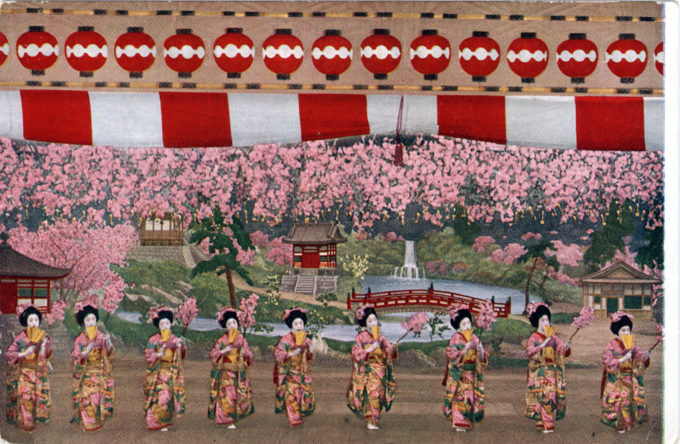“With the aim of popularising their products around the world, Kyoto held the Kyoto Exposition in 1872. Spectators came to see several shows, such as fireworks displays, sumo, no theatre, and dance performances by geisha including the Miyako Odori. By the end of May 1872, when the Kyoto Exposition ended, it was judged a success.
“The list of rankings of the event, called Kyoto nigiwai mitate (‘ranking list according to popularity in Kyoto’), was published in 1873, and, among the many performances and exhibitions, Miyako Odori received the highest esteem. Miyako Odori was thus established for the primary purpose of attracting domestic and foreign visitors.
“It is important to appreciate what an enterprising initiative Miyako Odori was in the context of the times … Miyako Odori was completely different from the usual Japanese stage dance performances of the time. The established pattern was such that one or two dancers appeared onstage and performed for a few minutes; after an interval, other dancers would appear to hold another performance. However, in the first Miyako Odori, 32 dancers in identical kimonos appeared on the stage and danced in the same manner. In this respect, it was similar to the Paris ‘Can Can’ dance, and was very new and original compared to Japanese stage performances at the time.
“How was Miyako Odori invented? It is believed that this innovation came about through a choreographer borrowing from and imitating a dance performance held near Ise shrine, which was, at that time, the most popular tourist spot in Japan. ”
– Making Japanese Heritage, edited by Christoph Brumann & Rupert A. Cox, 2009
Miyako Odori, Koyoto, c. 1940.
1940s • Arts & Culture • Geisha/Maiko/Onnanoko
Tagged with: Dancers, Geisha/Maiko, Gion, Kyoto, Miyako odori
Please support this site. Consider clicking an ad from time to time. Thank you!


